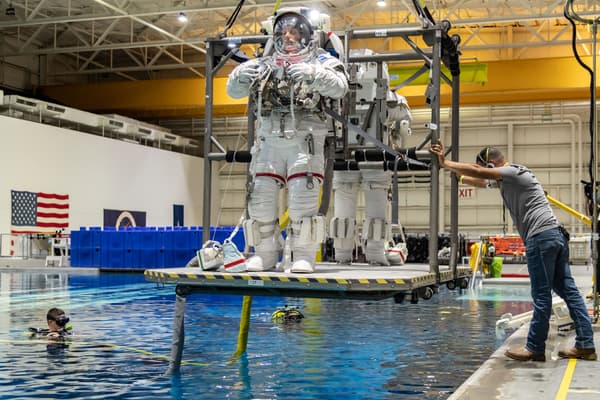Sophie Adenot in the background. The Frenchwoman begins a training cycle this Monday along with the other five members of the new promotion of astronauts of the European Space Agency (ESA) announced in November 2022. During the next twelve months the reduced promotion will spend at the European Center in Cologne , Germany, students will learn everything they need to fly into space for years to come.
If the different phases of her training unfold quickly and she is selected to go on a mission at the end of her training, Sophie Adenot could claim space by 2026. “It’s the grand minimum,” the engineer explained on BFMTV in November, shortly after. selection announcement.
Space systems, medicine, swimming pool…
At the beginning, Sophie Adenot and her comrades will follow “somewhat theoretical courses on all space disciplines”, explains astronaut Thomas Pesquet to Franceinfo, “in fact, it is quite academic. The schedule resembles that of a secondary school or university”.
The goal is for everyone to acquire a common base of scientific knowledge, not only about space technology systems, but also about general medicine and emergency medicine, because their paths diverge: Sophie Adenot has a career as an aeronautical engineer, like the Spanish Pablo Álvarez Fernández , as well as a helicopter pilot. But this is not the case of the British Rosemary Coogan, an astrophysicist, the Swiss Marco Sieber, a urologist, or the Belgian-Luxembourgian Raphaël Liégois, a specialist in neuroengineering.
Once the scientific bases have been acquired, “we will learn Russian, play sports and do increasingly practical activities,” explains Thomas Pesquet.
Specifically, the student-astronauts will “train to carry out a space walk and will begin to acquire special skills such as (…) robotic operations and spacecraft rendezvous and docking operations,” details the European Space Agency on its site.
Members of this new promotion will also spend time in a specially equipped pool to teach them how to use their equipment in reduced gravity situations. It is especially during these aquatic sessions that astronauts will be able to get used to wearing the huge suit required during extravehicular departures.

“Between five and ten years” for everyone to go on a mission
After this first year of training, one of the five astronauts in the Class of 2022 will be selected to prepare for a mission to the International Space Station. “Here, we’re going to go over ‘mission-specific training’ [entraînement visant à une mission spécifique, NDLR] and that lasts two years in general”, detailed Sophie Adenot in November on BFMTV.
Although the four astronauts are selected in turn, they will carry out other tasks: “maintenance of skills, assistance in the design of future space exploration missions, assistance in communication between station crews and ground teams,” detailed the astronaut to AFP in early March. . Thomas Pesquet estimates with Franceinfo that it will take “between five and ten years” to have “all or most” of the time to go into space. He himself had to wait until 2016 to fly to the ISS after being selected in 2009.
These training phases may be subject to modification as “Moon target” approaches. Lunar exploration will also be the subject of the Artemis 2 manned flight, which will take off in May 2024 to circumnavigate the Moon before Artemis 3 takes off in 2025, this time with the goal that the crew sets out on the Earth’s satellite. Sophie Adenot will not be prepared or experienced enough to participate in either of the two missions, unlike Thomas Pesquet who does not hide her lunar ambitions.
Source: BFM TV

